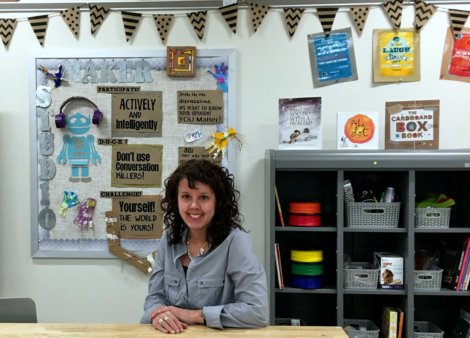
Getting the Most Out of BrainPOP for Non-English Speaking Learners
Posted by cemignano on
Guest blogger Jill Simon Auerbach is a middle and high-school teacher of science and English in a public high-school in a town near to Barcelona in Spain. She holds science degrees from Cornell University and the Autonomous University of Barcelona (UAB), and has acquired a Master’s degree in Research in the Didactics of Language in Literature from the same university. Her interests include teaching content through a foreign language, building an ELL Community of Readers, student-teacher mentoring, and in-service education. For further information on her areas of teaching and research, visit her blog at the UAB (http://blogs.uab.cat/sjill/).
With English firmly established as the most important globalized language, it has become of the utmost importance in non-English speaking countries to offer our students a high-quality education which allows them to become competent and fluent English-language speakers. Throughout Europe, one means of achieving this goal is through a methodology of teaching named CLIL or Content and Language Integrated Learning. This instructional method has a double focus: the teaching and learning of new disciplinary knowledge through a non-native language, and the improvement of the interactional and communicative skills in that foreign language. The CLIL approach takes into account that, in order to learn the particular subject being taught, students will inevitably need to employ specific sets of vocabulary, functional language, grammar and syntax as they improve their communicative and interactional competencies and strategies. This approach does not assume that the foreign language aspects are a given, but rather integrates the learning of the language with that of the content.
I have been incorporating BrainPOP* videos and educational materials into my lesson plans with public high school students in the autonomous, bi-lingual (Spanish and Catalan) region of Catalonia in Spain for the last five years. There are many advantages to incorporating these videos into the lessons. First, the fact that all the videos can be viewed with subtitles is particularly useful for foreign-language students. Second, the videos are complete, but not lengthy, so they don’t cause fatigue in the students who must make an important effort in listening and reading comprehension as they view. Third, the fact that the characters are repeated throughout the videos offers a format which creates expectations in the viewers about what is to come next, greatly aiding in their understanding. Lastly, while I am a native English speaker, most content teachers in non-English speaking countries are not; bringing a native voice into the classroom is, thus, very useful in this respect.
Even with the subtitles, however, the variety of lexical and grammatical structures which students are exposed to in the videos makes it so that a continuous viewing of the video is usually not possible without prior work. With the permission of BrainPOP*, and granting them their due credit explicitly, I have been incorporating screen-shots of the videos into dossiers which allow students to become familiar with the lexical and grammatical items of the video. In one typical exercise, arrows are drawn to specific lexical items in the screen shot, and students must label the items with a list of vocabulary items provided below. I also identify what functional language, idioms, or grammatical structures are present in the video and create exercises based on this language. These exercises may be used to prepare the students to understand the video before viewing, but they also may be incorporated to check comprehension as students are viewing, or following the video to improve the student’s abilities in these areas.
The material that is provided by BrainPOP* in the Related Reading or activity sessions may also incorporated into the dossiers I prepare if it is relevant to the topic we are learning. Sometimes this requires a simplified re-write of the text; on other occasions, the incorporation of labeled images, multiple choice or true/false comprehension questions, and similar activities help to make the material much clearer.
Lastly, the quiz is used in different ways. Sometimes I have the students complete the quiz before viewing the video as a means of activating their prior knowledge in the subject, as well as clearing up vocabulary difficulties so that the viewing is more comprehensible. Other times, students form groups and we view the quiz together, making it a competition to see which group answers the most questions correctly.
My experience with incorporating BrainPOP* in this format with my students has been very positive. Students enjoy the characters, and work diligently on the exercises I prepare for them as they know that it will help them to understand the content presented in the videos. And they love the comprehension quiz competitions! I would encourage you to try this integrated approach to learning content and language with your ELL and EFL students.
Jill Simon Auerbach
High School Teacher,
INS Joaquima Pla I Farreras
Av. Ragull 45-49
08173 Sant Cugat del Vallès (Barcelona)
sjill@xtec.cat














